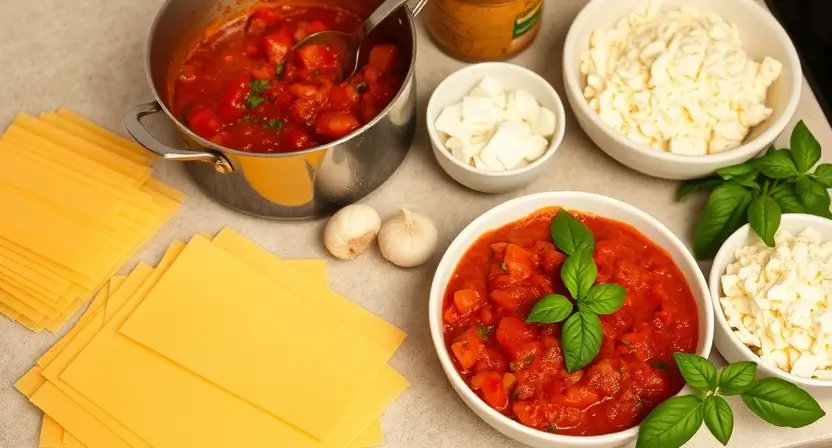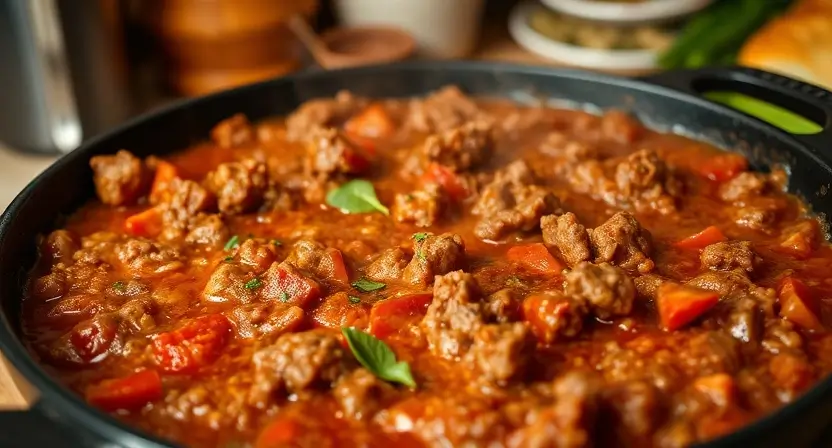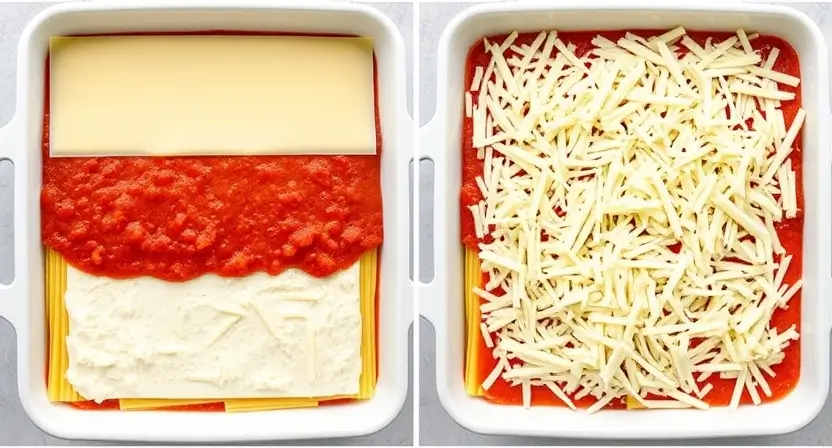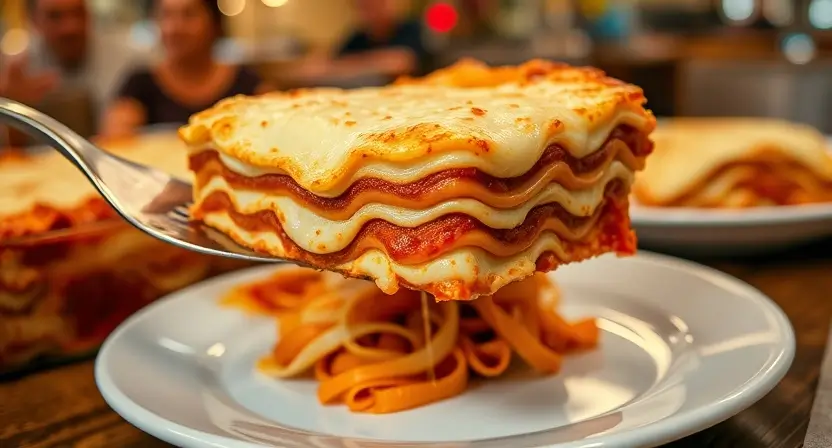Table of Contents
Introduction
Lasagna is one of the most beloved comfort foods around the world, celebrated for its hearty layers of pasta, rich sauces, and gooey melted cheese. Originating from Italy, lasagna has evolved into a versatile dish that caters to a wide variety of tastes, whether you’re a fan of the classic meat-filled version, a vegetarian enthusiast, or someone looking to experiment with gluten-free or keto-friendly options.
But what truly sets an ultimate lasagna recipe apart? It’s all about mastering the art of layering. Perfect layers ensure every bite is a balanced combination of pasta, sauce, and cheese, creating a symphony of textures and flavors that melt in your mouth. Whether you’re making lasagna for a family dinner, a holiday gathering, or a casual weeknight meal, getting the layers just right is the key to turning a good lasagna into an extraordinary one.
In this blog post, we’ll guide you through everything you need to know to make the perfect lasagna. From selecting the best ingredients to preparing a flavorful sauce, and from expert layering techniques to baking your lasagna to perfection, this guide has it all. You’ll also find tips for adding creative variations to suit your dietary preferences, as well as troubleshooting common issues like watery lasagna or burnt edges.
By the time you finish reading, you’ll be equipped with the skills and knowledge to make a show-stopping lasagna that’s guaranteed to impress. Let’s dive into the delicious world of lasagna and uncover the secrets to achieving perfect layers every time!
The Ingredients for the Ultimate Lasagna Recipe

Essential Pasta Sheets for Lasagna
- Fresh vs. store-bought pasta sheets: What works best for your lasagna?
- Tips for pre-cooking pasta sheets to prevent sogginess.
Choosing the Best Cheese for Lasagna
- The role of ricotta for creamy texture.
- Mozzarella for that gooey, cheesy lasagna goodness.
- Parmesan for a savory, sharp flavor.
Meat and Vegetables for Lasagna Layers
- Ground beef, pork, or a mix for a classic meat lasagna.
- Vegetarian options: spinach, zucchini, or mushrooms.
- How to enhance the flavor of your lasagna with fresh herbs and garlic.
Preparing the Perfect Meat (or Vegetarian) Sauce

Browning the Meat or Preparing a Vegetable Base
- Why browning the meat before adding sauce is crucial for flavor.
- Creating a rich vegetable base for vegetarian lasagna.
Adding Tomatoes and Seasonings
- Using canned or fresh tomatoes for a robust lasagna sauce.
- Enhancing your lasagna sauce with basil, oregano, and red pepper flakes.
Simmering the Sauce to Perfection
- Why simmering for at least 30 minutes deepens flavor.
- How to avoid watery lasagna sauce by balancing liquid ingredients.
Assembling Your Lasagna: Layering Like a Pro

Preparing the Baking Dish
- Use a deep baking dish to hold all your lasagna layers.
- How to grease the dish to prevent sticking.
Layering Ingredients for a Perfect Lasagna
- Start with a layer of sauce to prevent the bottom from drying out.
- Alternate pasta sheets, sauce, and cheese for balanced layers.
- Tips for spreading ingredients evenly to avoid uneven lasagna bites.
Pro Tips for Consistent Lasagna Layers
- Avoid overloading layers to keep the lasagna balanced.
- How to achieve a golden, cheesy crust on the top layer.
Baking the Lasagna to Perfection

Preheating the Oven for Even Cooking
- The ideal temperature for baking lasagna (typically 375°F or 190°C).
- Why preheating the oven is critical for a consistent bake.
Covering and Timing Your Lasagna
- Using foil to retain moisture during the first part of baking.
- Removing foil halfway to create a golden top layer.
Testing for Doneness
- How to check if the lasagna is ready: bubbling sauce and tender pasta.
- Letting the lasagna rest for 10-15 minutes for cleaner slices.
Tips and Variations for the Best Lasagna Every Time

Creative Variations for Your Lasagna
- Try vegetarian lasagna with layers of roasted vegetables.
- Gluten-free lasagna options using alternative pasta sheets.
- Keto-friendly lasagna made with zucchini or eggplant slices.
Storing and Reheating Lasagna
- How to store leftover lasagna in the fridge or freezer.
- Reheating lasagna to keep layers intact and flavors fresh.
Troubleshooting Common Lasagna Issues
- Preventing watery lasagna by draining ingredients properly.
- Avoiding burnt edges by covering with foil or using a baking shield.
Conclusion
- Mastering the ultimate lasagna recipe takes practice, but with the right ingredients and techniques, it’s achievable for anyone.
- Whether it’s a classic meat lasagna or a creative vegetarian twist, the perfect layers make all the difference.
- Try this recipe today, and let us know how your lasagna turned out in the comments below!
Related Recipe Posts :
Classic Lasagna Recipe: A Step-by-Step Guide to Perfect Layers